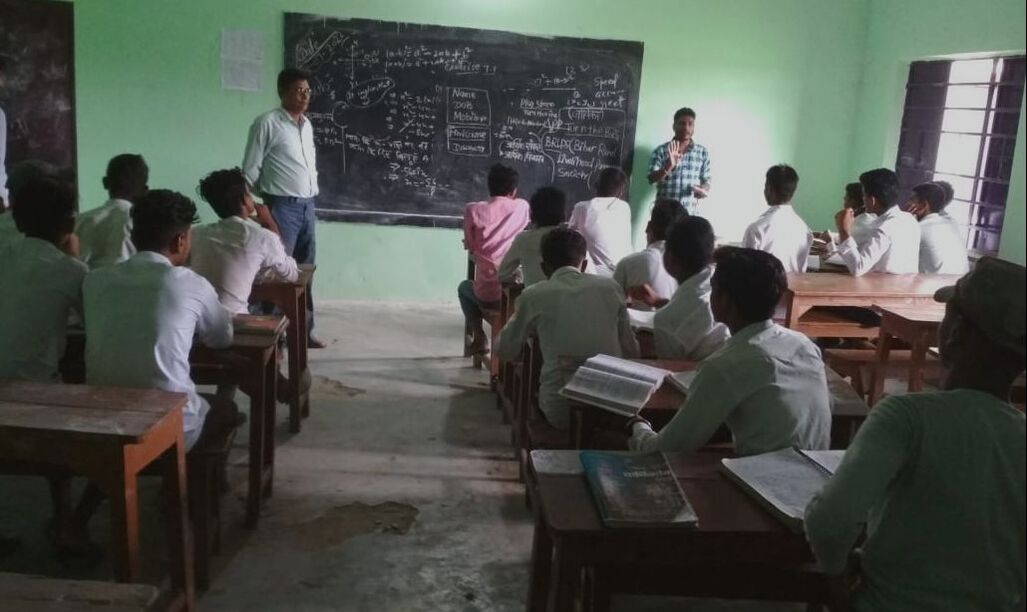|
“Of the 97 fellows selected that year, I was the only rural college graduate. There was no one there who looked like me or spoke like me. I felt alienated, intimidated and judged by many.” These words used by Ashweetha Shetty while narrating her experience of moving to Delhi on a fellowship, describe one of the many dichotomies Indian education faces. Her story reflects the stories of millions of children who suffer from educational inequality, segregation and disparity in the quality of education provided in India.
India’s vast and diverse population poses a significant challenge in ensuring essential prospects such as equal access to education, a citizens’ fundamental right articulated in Article 21-A of the Indian Constitution. With the help of policies, campaigns and awareness programs, India rose to a remarkable literacy rate of 74.8% in 2018 from a mere 18.3% in 1951. However, the very same article reported the literacy rate among men to be 74.8% while female literacy rate stood at 65.8%; a stark difference that has prevailed since pre-independence times. At the core of these disparities lies the highly uneven economy of India, where the top 1% individuals hold 4 times more wealth than the bottom 70%. As many as 32 million children from poor or underprivileged backgrounds do not have access to education; a direct consequence of the widening gap between the haves and have-nots. This economic variability is further catalyzed by factors such as geographic and linguistic differences, caste and gender based segregation, religious beliefs, and stigma around children with disabilities. Among others, geographic inaccessibility poses a significant challenge. Efforts have been made to address this issue since the Right to Education Act 2009, which mandated primary schools to be located within 1 km of every child's home. However, they have led to more downstream problems. While successfully enrolling many previously out-of-school children in remote areas, they also led to an increase in schools with insufficient infrastructure, impacting resource distribution and hindering access to secondary and higher education, particularly for girls and learners with disabilities. Children with disabilities in India are among the most disadvantaged in terms of access to schooling and completion of elementary education. The establishment of special schools for these children aimed at addressing these issues proved insufficient, as they perpetuated segregation rather than fostering integration. While these schools offered education, they fell short of integrating children with disabilities into mainstream society. The ongoing discussion about how education is influenced by gender, caste-based separation and religious grouping has lasted for decades. However, the interplay of these issues adds multiple layers of complexity and cannot be resolved with straightforward solutions. In terms of gender-based disparity, girls generally have a lower literacy rate compared to males, which is worsened by caste and religious differences. Women in rural areas suffer the most in terms of accessibility to education, a consequence of the overlap of cultural beliefs, poor background, and geographic isolation. All this has resulted in a bumpy educational landscape characterized by visible segregation, starting as early as primary education and continuing up until college. The prospect of providing equal access to education to every citizen in a country as diverse as India is multi-faceted, marked by a complex interplay of factors, including gender, caste, religious affiliations, and socio-economic conditions. Technology is at the forefront of addressing, if not entirely closing, the prevailing gaps within India's educational landscape. At Turn the Bus, we believe in harnessing the transformative potential of technology to address the existing disparity in educational accessibility regardless of the social, religious or cultural background of a learner. Our vision manifests in the form of making digital education accessible to children from poor backgrounds via online tutoring, using platforms such as edX, our YouTube Channel and Turn the Bus app. The obstacles to achieving equal access to education are many and often multi-layered. Yet, they hold the promise of resolution if we take the initiative to tackle each layer, one at a time.
0 Comments
Leave a Reply. |
Archives
March 2024
Categories |
21213 SE 42nd Pl.
Issaquah WA 98029
Issaquah WA 98029
Turn the Bus is a registered 501 (c) (3) US nonprofit organization.
© Turn the Bus. All rights reserved.
© Turn the Bus. All rights reserved.


 RSS Feed
RSS Feed
